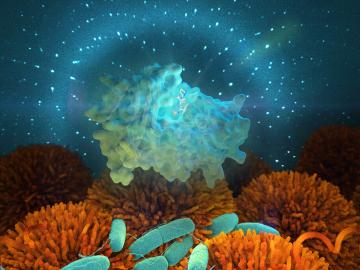
Filter News
Area of Research
- (-) Clean Energy (168)
- (-) Fuel Cycle Science and Technology (2)
- (-) Neutron Science (72)
- Advanced Manufacturing (5)
- Biological Systems (1)
- Biology and Environment (102)
- Biology and Soft Matter (4)
- Building Technologies (2)
- Chemical and Engineering Materials (3)
- Chemistry and Physics at Interfaces (7)
- Climate and Environmental Systems (7)
- Computational Biology (1)
- Computational Chemistry (5)
- Computational Engineering (1)
- Computer Science (3)
- Data (1)
- Earth Sciences (1)
- Electricity and Smart Grid (1)
- Energy Frontier Research Centers (7)
- Functional Materials for Energy (8)
- Fusion and Fission (32)
- Fusion Energy (7)
- Geographic Information Science and Technology (1)
- Isotopes (21)
- Materials (122)
- Materials for Computing (13)
- Materials Synthesis from Atoms to Systems (8)
- Materials Under Extremes (7)
- National Security (45)
- Neutron Data Analysis and Visualization (2)
- Nuclear Science and Technology (27)
- Quantum Condensed Matter (3)
- Quantum information Science (4)
- Renewable Energy (2)
- Sensors and Controls (2)
- Supercomputing (153)
- Transportation Systems (4)
News Type
News Topics
- 3-D Printing/Advanced Manufacturing (24)
- Advanced Reactors (2)
- Artificial Intelligence (6)
- Big Data (1)
- Bioenergy (12)
- Biology (5)
- Biomedical (7)
- Biotechnology (1)
- Buildings (11)
- Chemical Sciences (4)
- Clean Water (5)
- Climate Change (8)
- Composites (2)
- Computer Science (13)
- Coronavirus (8)
- Cybersecurity (5)
- Decarbonization (16)
- Energy Storage (21)
- Environment (21)
- Fossil Energy (2)
- Grid (13)
- High-Performance Computing (3)
- Machine Learning (3)
- Materials (9)
- Materials Science (11)
- Mathematics (2)
- Mercury (1)
- Microelectronics (1)
- Microscopy (3)
- Nanotechnology (4)
- National Security (3)
- Net Zero (1)
- Neutron Science (34)
- Nuclear Energy (3)
- Partnerships (4)
- Physics (1)
- Polymers (2)
- Quantum Computing (1)
- Quantum Science (2)
- Security (4)
- Simulation (1)
- Space Exploration (2)
- Summit (4)
- Sustainable Energy (14)
- Transportation (17)
Media Contacts

Last November a team of students and educators from Robertsville Middle School in Oak Ridge and scientists from Oak Ridge National Laboratory submitted a proposal to NASA for their Cube Satellite Launch Initiative in hopes of sending a student-designed nanosatellite named RamSat into...
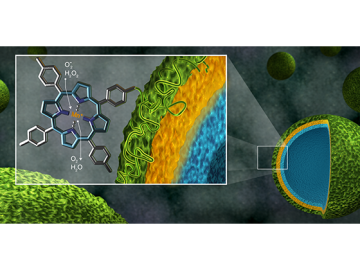
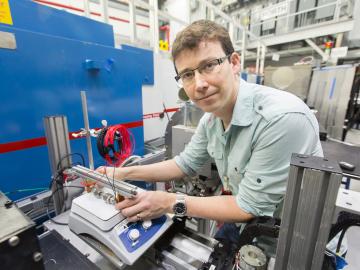


Researchers are looking to neutrons for new ways to save fuel during the operation of filters that clean the soot, or carbon and ash-based particulate matter, emitted by vehicles. A team of researchers from the Energy and Transportation Science Division at the Department of En...
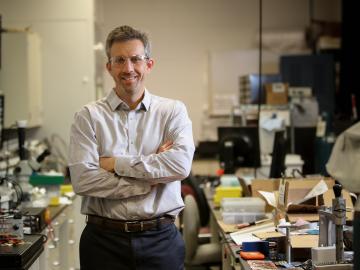
Yarom Polsky’s diverse background in private and public-sector research has given him a knack for recognizing opportunities to advance the state-of-the-art, and he parlays that knowledge into successful innovation as an engineer, group leader, and
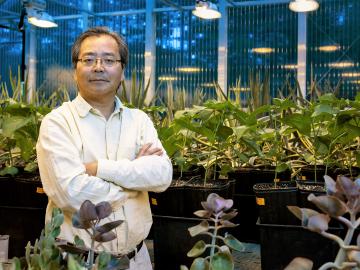
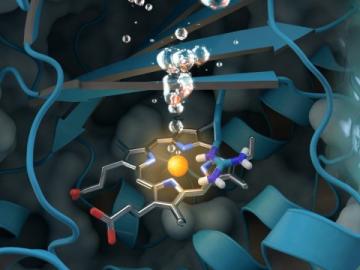
A new study sheds light on a unique enzyme that could provide an eco-friendly treatment for chlorite-contaminated water supplies and improve water quality worldwide. An international team of researchers led by Christian Obinger from the University of Vienna used neutron analys...
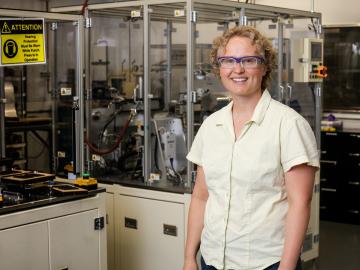
In the quest for better batteries, Rose Ruther has found that the positives nearly always outweigh the negatives, and that’s what keeps her coming back to the lab. Ruther works on novel materials to create batteries with higher energy density at a lower cost as part of the Roll to Roll Manufactur...
